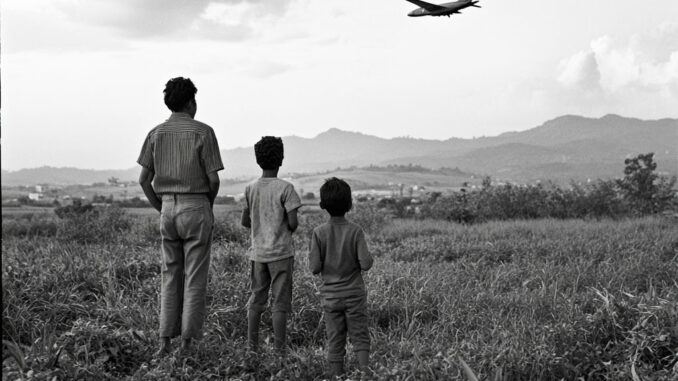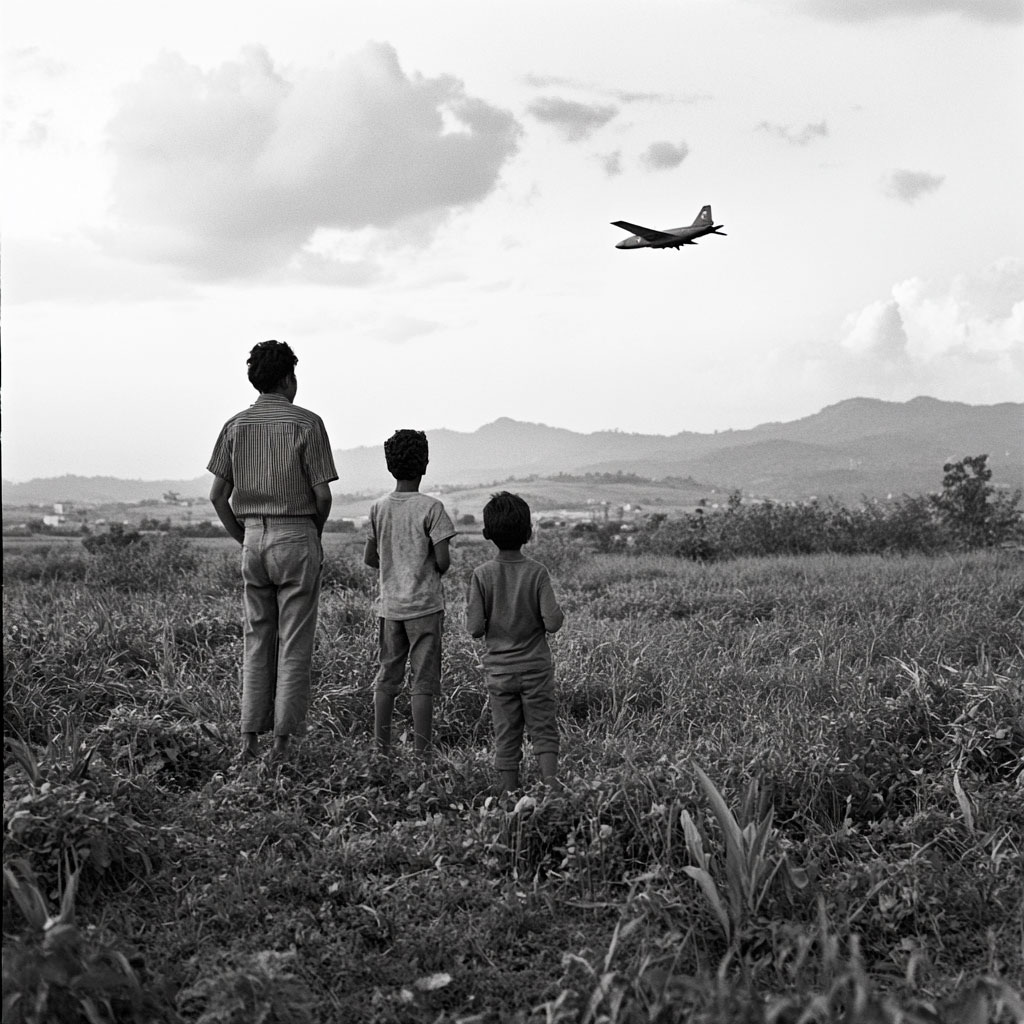
Detailed analysis of aircraft use during the Cuban Revolution, including models, missions, operators, and logistical constraints (1953–1959).
Aircraft played a limited but impactful role during the Cuban Revolution from 1953 to 1959. The Batista regime used military aircraft for reconnaissance, close air support, psychological warfare, and troop transport. The Cuban Air Force operated American-supplied aircraft including North American B-25 Mitchells, Lockheed T-33 Shooting Stars, P-47 Thunderbolts, and C-47 Skytrains. These aircraft were used primarily against Fidel Castro’s guerrilla forces in the Sierra Maestra. The operational effectiveness was constrained by poor maintenance, low pilot readiness, difficult terrain, and limited intelligence. Rebel forces under Castro had no air force but used captured weapons to shoot down or damage aircraft. The final months of the revolution saw decreased aerial activity due to desertions and fuel shortages. This article explores in detail the technical and tactical dimensions of aircraft use during the Cuban conflict, focusing on platform capabilities, mission profiles, and logistical constraints.

Aircraft operations during the Cuban Revolution (1953–1959)
The Cuban Revolution featured asymmetric warfare between government forces under Fulgencio Batista and guerrilla forces led by Fidel Castro. In this environment, aircraft operations were limited in scale but strategically important. The Cuban Air Force (Fuerza Aérea del Ejército de Cuba, FAEC) relied on surplus American aircraft with minimal modernization. Aircraft were used primarily by the Batista regime for reconnaissance, close air support, bombing, psychological operations, and logistics. No structured air opposition was presented by the rebels.
Aircraft inventory and sources
The FAEC’s inventory in the mid-1950s was composed almost entirely of U.S.-origin platforms. The aircraft types in active use included:
- North American B-25 Mitchell (twin-engine medium bomber): FAEC operated 12 B-25s by 1957. These were used for ground attack and psychological operations.
- Lockheed T-33 Shooting Star (jet trainer/light attack): Cuba acquired 4 T-33s in the early 1950s. These were among the few jets in Latin America at the time.
- Republic P-47 Thunderbolt: The FAEC operated approximately 15 P-47s, mostly for close air support and air patrol.
- Douglas C-47 Skytrain (transport): The FAEC maintained at least 6 operational C-47s for logistics and troop transport.
- Beechcraft C-45 Expeditor and Piper L-4 Grasshopper types were also in inventory, used for liaison and observation.
Maintenance and parts supply were dependent on U.S. support, which became unreliable as American policy shifted in the late 1950s. By 1958, many airframes were non-operational due to spare parts shortages, fuel issues, and reduced technical staff efficiency.
Operational zones and missions
Aircraft were deployed primarily over Oriente Province, where guerrilla activity was concentrated in the Sierra Maestra mountains. The mission types executed by FAEC included:
- Aerial bombardment: B-25s dropped fragmentation and high-explosive bombs on suspected rebel camps. Bombing accuracy was low due to canopy cover and lack of targeting systems. The B-25s often flew at medium altitude to avoid small arms fire, which reduced effectiveness.
- Close air support: P-47s conducted strafing runs using .50-caliber machine guns. These missions were limited by poor ground coordination and lack of forward air controllers.
- Psychological operations: Aircraft dropped leaflets and conducted low-altitude flyovers to intimidate civilian populations and demoralize rebel groups.
- Reconnaissance: Light aircraft such as the L-4 and C-45 performed low-speed surveillance but were vulnerable to ground fire.
- Troop transport and logistics: C-47s moved soldiers, medical supplies, and equipment. Several missions included emergency extraction of injured government troops from remote zones.
Limited use of the T-33 jets occurred in mid-1958 for high-speed overflight and show-of-force purposes. These aircraft were unsuitable for COIN (Counter Insurgency) due to their high speed and short loiter time. Their operational readiness was under 50% by late 1958.
Tactical effectiveness and limitations
The FAEC’s air campaigns were ineffective against guerrilla tactics. The Sierra Maestra terrain, composed of steep slopes and dense forests, offered natural cover and rendered conventional aerial surveillance unreliable. Bombing campaigns frequently failed to hit targets and often caused civilian casualties, which turned local populations against the regime.
Key limitations included:
- Inadequate training: Most pilots were trained in basic flight and navigation but had limited experience in CAS or jungle warfare support.
- Mechanical reliability: By 1958, only 40–50% of the aircraft were considered airworthy. Maintenance cycles were inconsistent, and cannibalization of parts became common.
- Fuel shortages: Due to embargoes and logistical issues, fuel availability was erratic. Sortie rates declined from an estimated 10 sorties/day in 1957 to fewer than 3 sorties/day by December 1958.
- Command and control breakdown: Lack of coordination with ground units reduced strike precision. Aircraft often operated on vague intelligence or outdated positions.
- Airbase vulnerability: Rebel sabotage campaigns occasionally targeted airstrips and fuel depots. Notably, the Santiago de Cuba airstrip suffered at least one attack in late 1958.
Despite these challenges, FAEC retained air superiority throughout the revolution. No organized anti-aircraft systems were present among rebel forces, although isolated incidents of small arms fire damaged aircraft.

Rebel response and countermeasures
Fidel Castro’s 26th of July Movement did not possess aircraft or air defense systems. However, several measures were adopted to mitigate government air power:
- Camouflage and dispersal: Rebel camps avoided clustering. Structures were built under tree cover or disguised as civilian buildings.
- Night movements: Rebel units shifted positions primarily at night to avoid detection and air attack.
- Ground fire: AK-pattern rifles and captured M1 Garands were occasionally used to fire on low-flying aircraft. In rare cases, aircraft were forced to divert or land after sustaining damage.
- Propaganda: Downed aircraft or crashed bombers were used for propaganda purposes, often photographed and circulated to demonstrate regime weakness.
There were no confirmed aircraft losses due to enemy fire, but at least four forced landings or mechanical failures occurred in hostile areas, leading to crew captures or evacuations.
Final phase and withdrawal of air assets
As rebel forces advanced in late 1958, several FAEC aircraft were relocated to safer airfields in Havana and Camagüey. The last known offensive sortie took place on December 26, 1958, with two B-25s conducting a strike on rebel positions near Santa Clara. Low fuel levels, pilot desertions, and collapsing logistics led to the grounding of most aircraft by December 30, 1958.
When Batista fled the country on January 1, 1959, several aircraft were left behind at San Antonio de los Baños and other bases. These airframes were later incorporated into the nascent Revolutionary Air and Air Defense Force (DAAFAR), the successor to the FAEC.
Aircraft in the Cuban Revolution were used almost exclusively by Batista’s government for bombing, surveillance, and transport missions. Despite operating a mixed fleet of B-25s, P-47s, and T-33s, the FAEC’s efforts were hampered by poor logistics, inadequate pilot training, limited intelligence, and the natural advantages of guerrilla warfare. While air power maintained psychological and logistical impact, it failed to alter the strategic balance of the conflict. By the end of 1958, air operations had become minimal due to internal collapse rather than direct rebel action.
War Wings Daily is an independant magazine.